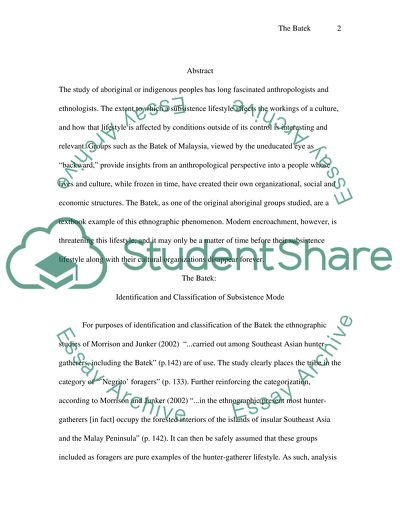Cite this document
(“The Batek of Malaysia: Subsistence Lifestyle and Its Impact on Culture Essay”, n.d.)
Retrieved from https://studentshare.org/environmental-studies/1408646-the-batek-of-malaysia-subsistence-lifestyle-and-its-impact-on-culture
Retrieved from https://studentshare.org/environmental-studies/1408646-the-batek-of-malaysia-subsistence-lifestyle-and-its-impact-on-culture
(The Batek of Malaysia: Subsistence Lifestyle and Its Impact on Culture Essay)
https://studentshare.org/environmental-studies/1408646-the-batek-of-malaysia-subsistence-lifestyle-and-its-impact-on-culture.
https://studentshare.org/environmental-studies/1408646-the-batek-of-malaysia-subsistence-lifestyle-and-its-impact-on-culture.
“The Batek of Malaysia: Subsistence Lifestyle and Its Impact on Culture Essay”, n.d. https://studentshare.org/environmental-studies/1408646-the-batek-of-malaysia-subsistence-lifestyle-and-its-impact-on-culture.


